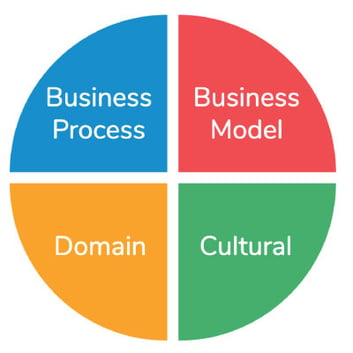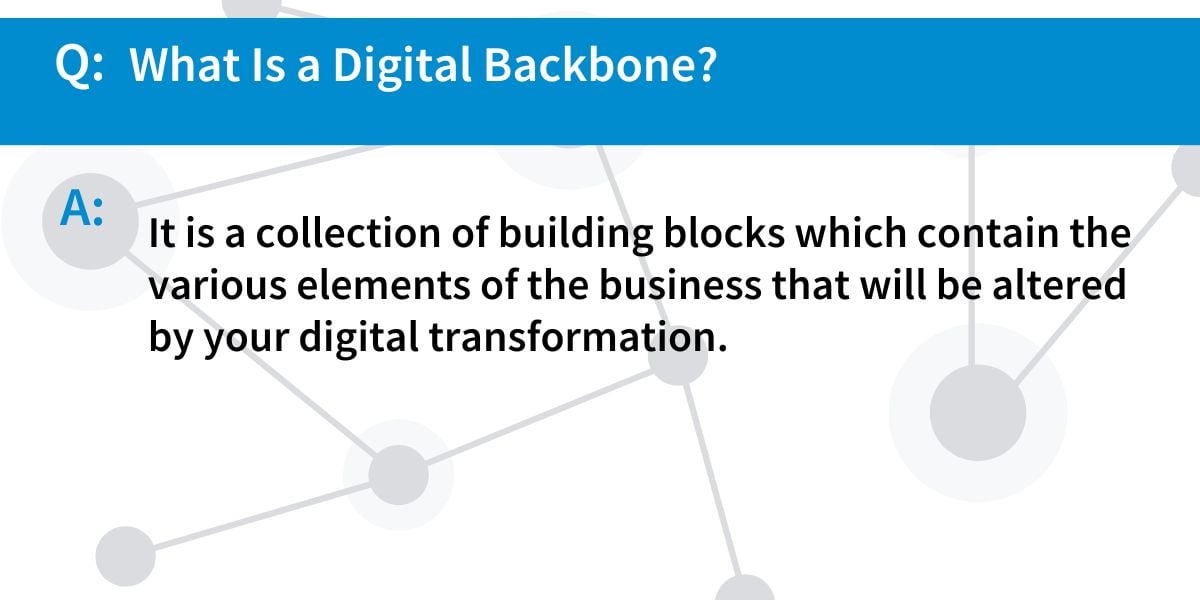What Are the 4 Main Areas of Digital Transformation?
March 25, 2020 •DJ Team

In today's world, technology will generally do one of two things: expose opportunities for success or threaten organizations that refuse to accept the changing ways of the business landscape. Some might say it's not the fear of digital disruption that compels companies to make changes; rather, it's the digital version of the fear of missing out (FOMO). In other words, some leaders know that the integration of digital transformations into their organizations can reap great rewards and they don't want to miss out on the opportunities that could belie such implementations.
This, of course, leads us to the definition of digital transformation. What does it mean and why is it important?
What is Digital Transformation?
Digital transformation is the integration of digital technology into all areas of a brand's business. It can fundamentally change the way business is carried out to both internal and external customers. It requires organizations to challenge the status quo, get comfortable with the uncomfortable, and experiment—knowing failure might be a possibility. The digital transformation approach requires examination (and often changes) related to all aspects of an organization, including:
- Customer experience
- Operational agility
- Culture and leadership
- Workforce enablement
- Digital technology integration
In short, digital transformation enables companies to deliver an exceptional experience to their customers—one people have come to expect and demand—with tools that affect both internal and external processes.
Click her to get started with DemandJump free today.
Digital Transformation Examples
The Future of Customer Experience and Engagement outlined six companies that have notably integrated digital transformation into their cultures. Porsche, for example, puts its customers into the driver's seat by investing in technology that enables representatives to document every interaction with its clientele. In this way, Porsche knows its customers' expectations at every touchpoint and can utilize the data it collects to create targeted campaigns that speak to exact audiences. For example, only customers who are actually interested in purchasing cars will be targeted by certain ads, leading to an increase in overall sales conversions.
Rockwell Automation is another company that exemplifies digital transformation. The company relies on a system of continuous improvement that must be supported from within. To become a fully connected organization, Rockwell Automation focused on achieving an optimal customer experience through the implementation of digital technologies that enabled the brand to achieve its goals.
Challenges of Digital Transformation
Like most corporate changes, digital transformation can face some challenges. Companies might face pushback from employees, challenges related to organizational structure changes, and budgetary constraints. A lack of experience in both the expertise to lead digital initiatives and the ability to drive overall digitization strategy can also stand in the way of progress.
One challenge many companies experience as they take on a digital transformation is realizing the amount of data they now have at their disposal. This data often comes from a variety of new sources, and the challenge comes in making sense of all of it together. If you’ve adopted more modern approaches to marketing and are now present on social media, using display advertisements, running search advertisements or advertising in many other locations, you likely want to understand how these different channels influence behavior in another. Many companies now turn to third-party analytics solutions like DemandJump to help them make sense of it all.
Click here to see how a cross-channel analytics platform can help your digital transformation.
Four Main Areas of Digital Transformation

There are four main areas of digital transformation, which are as follows:
Business Process
This is the collaboration of your brand's people, processes, and applications. In the digital transformation world, it refers to transforming the business processes, services, and models your company uses by introducing technology that can leverage the skills, successes, and opportunities of your team. Process transformation gives finite activities—such as data and analytics—new ways to retrieve and process information.
Business Model
Overhauling a business model means incorporating technology because it will drive revenue and improve the customer experience, rather than just implementing technology for technology's sake. Model transformation looks at the infinite possibilities of businesses. Think of how Netflix transformed from a mailbox DVD business to the streaming service it is today.
Domain
Domain transformations occur when one business is able to slide into another area successfully. Amazon, for example, added its own streaming platform (Amazon Prime), as well as Amazon Web Services (AWS), which is now the largest cloud computing/infrastructure service. Both of these domains were formerly dominated by major players in their respective areas, but Amazon's financial backing enabled it to make huge headway when entering these new-to-the-company markets.
Cultural/ Organizational
Different people use different systems; getting everybody on the same page and willing to accept big changes can be challenging, but it will be worth it if your brand delivers an overall better outcome to your customers.
What is a Digital Backbone?
In this digital transformation tutorial, it's important to point out what a digital backbone is. As we discuss the various types of digital transformations an organization can undergo, each business needs to be backed by a digital backbone. In other words, you need to have building blocks, so to speak, which contain the various elements of the business that will be altered by your digital transformation. This is part of the digital transformation framework.

Digital Transformation Strategy
How do you create digital transformation goals? It's all driven by a digital transformation framework, which is a formalized plan that tells you how to make strategic updates to core systems and processes. Your company's digital transformation guide might include:
- Vision Creation: Determining your brand's vision and the goals you want to achieve with your digital transformation
- Market Analysis: Understanding how technology can enhance your business or industry before you're overwhelmed by your competition
- Experience Design: Focus on the experience you want to create for your customers
- Infrastructure Adjustments: Bringing new things to the table often requires an adjustment of existing processes and methods
These are exciting times. Digital transformation is helping companies come into this modern era by incorporating processes and systems - both internally and externally - that optimize user experiences and bring customers coming back for more.
If you want to start your digital transformation, making content that brings people to your site is step one. We show where you're winning, and where you have opportunities for growth, try it for free today!
Featured Articles
Categories
- Attribution Tracking (13)
- Channel Optimization (11)
- Consumer Insights (68)
- Content Marketing (251)
- Data Science (8)
- Digital Marketing (6)
- Digital Transformation (26)
- Enterprise (10)
- Lead Generation (14)
- Market Intelligence (8)
- Marketing Analytics (39)
- Marketing Attribution (57)
- Marketing Management (153)
- Marketing Operations (86)
- Organic Search (222)
- Paid Search (52)
- Pillar-Based Marketing (63)
- Programmatic Advertising (9)
- SaaS Content (14)
- SaaS Marketing (29)
- Search Marketing (111)
- SEO Keyword Research (28)
- SEO Pillar (18)
- SEO Strategy (46)
- SMB (5)
- Website Content (12)


